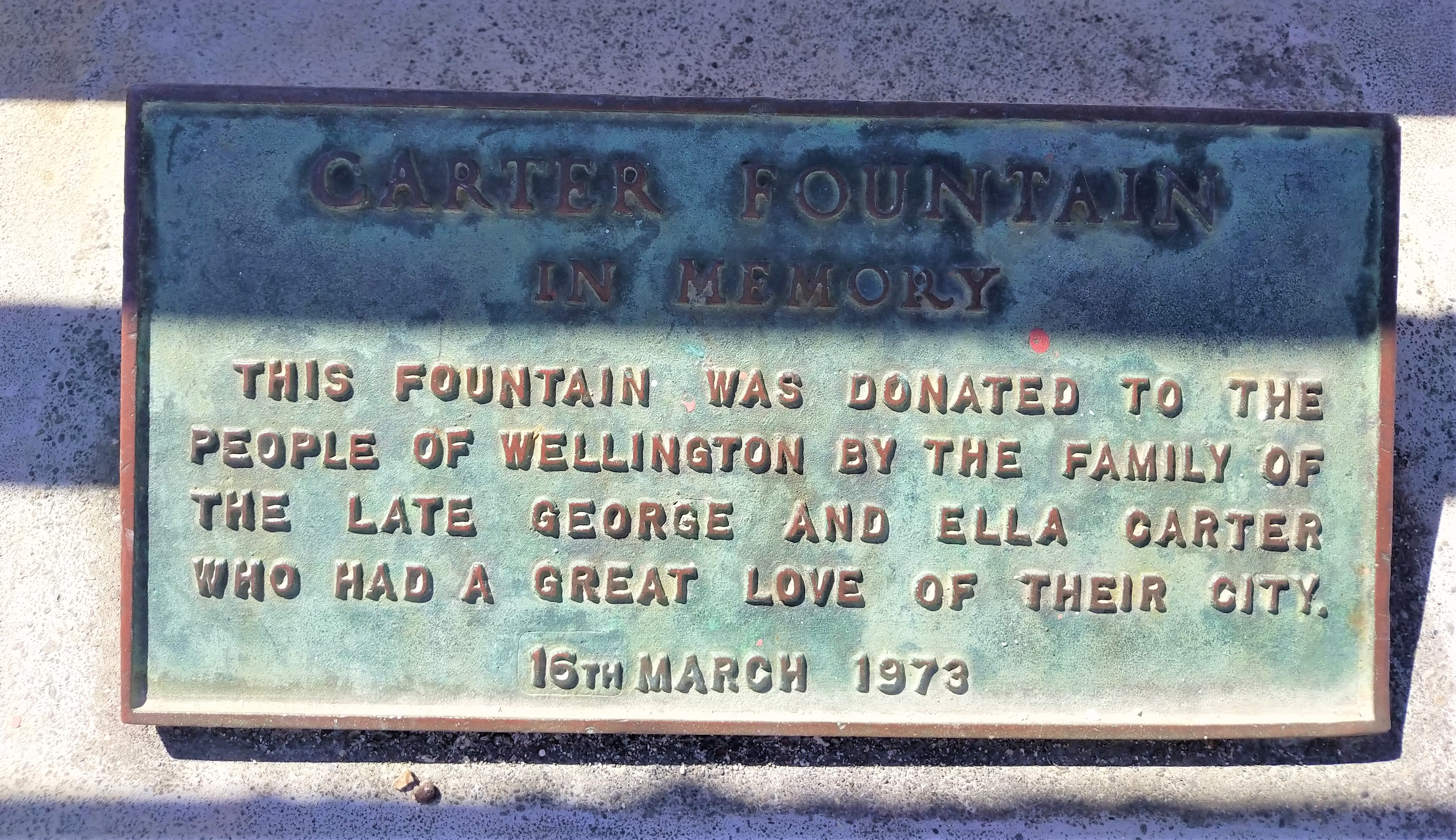Carter Fountain on:
[Wikipedia]
[Google]
[Amazon]
The Carter Fountain is a distinctive feature out in Wellington Harbour from
 The Carter Fountain was a gift to the city of
The Carter Fountain was a gift to the city of
Oriental Bay
Oriental Bay is a bay and suburb of Wellington, the capital city of New Zealand. Noted for being both a popular beach and a luxurious centre of affluence in the city, it is located close to the Central Business District on Wellington Harbour.
...
. Installed in 1973, it was named in memory of the parents of its donor Hugh Carter, who drowned only days after the fountain's inauguration.
Background
 The Carter Fountain was a gift to the city of
The Carter Fountain was a gift to the city of Wellington
Wellington ( mi, Te Whanganui-a-Tara or ) is the capital city of New Zealand. It is located at the south-western tip of the North Island, between Cook Strait and the Remutaka Range. Wellington is the second-largest city in New Zealand by me ...
from local resident and businessman Hugh Carter, as a tribute to his parents George and Ella Carter and the people of Wellington. A plaque was installed on the band rotunda saying: "Carter Fountain. In Memory. This fountain was donated to the people of Wellington by the family of the late George and Ella Carter, who had a great love of their city. 16th March 1973". Carter was inspired by the Jet d'Eau
The Jet d'Eau (, ''Water-Jet'') is a large fountain in Geneva, Switzerland and is one of the city's most famous landmarks, being featured on the city's official tourism web site and on the official logo for Geneva's hosting of group stage matches ...
fountain he saw in Geneva
Geneva ( ; french: Genève ) frp, Genèva ; german: link=no, Genf ; it, Ginevra ; rm, Genevra is the List of cities in Switzerland, second-most populous city in Switzerland (after Zürich) and the most populous city of Romandy, the French-speaki ...
in the early 1960s. Construction began in 1972 and cost NZ$
The New Zealand dollar ( mi, tāra o Aotearoa; sign: $, NZ$; code: NZD) is the official currency and legal tender of New Zealand, the Cook Islands, Niue, the Ross Dependency, Tokelau, and a British territory, the Pitcairn Islands. Within New ...
75,000. There was some controversy when the project was announced as some residents objected to the fountain on aesthetic reasons or because it might interfere with rowing, or thought the money it cost could have been better spent elsewhere.
The fountain was officially opened on 16 March 1973. Tragedy struck just days after the fountain was officially opened. Carter had moored his launch ''Kualani'' in the harbour for the opening of the fountain. He disappeared from the boat on the night of 20/21 March and his body was found in the harbour on 21 March. He was 55.
The fountain was originally maintained by the Wellington Harbour Board
(Strong but true)
, predecessor =
, merged =
, successor =
, formation =
, founder =
, founding_location =
, dissolved =
, merger =
, type ...
, and with the 1989 local government reforms
The 1989 New Zealand local government reform was the most significant reform of local government in New Zealand in over a century. Some 850 local bodies were amalgamated into 86 local authorities, made up of regional and territorial levels.
Backg ...
, this responsibility transferred to the Wellington City Council
Wellington City Council is a territorial authority in New Zealand, governing the country's capital city Wellington, and ''de facto'' second-largest city (if the commonly considered parts of Wellington, the Upper Hutt, Porirua, Lower Hutt and ...
.
Operation
The fountain spouts water into the air. Following complaints from local residents about salt spray, a wind sensor was installed on the nearby band rotunda that prevents the fountain from operating above a given wind speed; sources vary whether this is . The band rotunda also holds the land-based electrical components for the fountain. Monthly maintenance is carried out by an electrician, who reaches the fountain in a row boat. Twice a year, divers check on the submerged pump. The annual maintenance costs NZ$45,000, of which NZ$20,000 is for electricity. The cost for replacing the pump in 2009 was NZ$29,000, during which time the fountain was out of operation for half a year. Eight floodlights are used to light and colour the fountain. The halogen lights were replaced in 2013 by LED light at a cost of NZ$21,000, with the new lights lasting up to 50,000 hours compared to 2,000 hours previously, and being able to be remote controlled. The fountain is operated up to four times a day: *Monday to Thursday: 07:30–09:00, noon–14:00, 16:30–18:00, 19:30–22:30 *Friday: 07:30–09:00, noon–14:00, 16:30–18:00, 19:30–23:00 *Saturday and Sunday: 08:30–16:30, 19:00–23:00References
{{coord, -41.28980, 174.79436, type:landmark_region:NZ, format=dms, display=title Monuments and memorials in New Zealand Tourist attractions in Wellington City Fountains in New Zealand Buildings and structures in Wellington City Outdoor sculptures in New Zealand